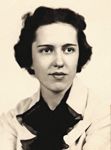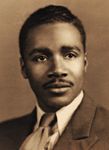Legacy project takes root at Cornell
The Enduring Veterinary Legacy project honors veterinarians who advanced animal health over the past 100 years.
Ithaca, N.Y. — What started out as a casual conversation between Dr. Donald Smith and some alumni of the College of Veterinary Medicine at Cornell University has turned into a lasting legacy documenting the evolution of the profession.

Class of 1939: Dr. Clarence Bent
"I never thought people would be very interested," Smith says of the project. "I have been very surprised by two things—how much people like it, especially the benefit the students find, and how much history—the Great Depression, African American veterinarians and the development of small-animal practices—is intertwined and evident."
Over the past three years, Smith traveled across the country interviewing veterinarians, or their surviving family members, about the changes in animal care over the past 100 years. The resulting biographies, and in some cases audio files, can be found on the Enduring Veterinary Legacy site—vet.cornell.edu/legacy—through Cornell University's website. So far 50 interviews and profiles are complete with 23 posted online.
Click here to view the profiles of the five veterinarians pictured here.
The idea for the project came to Smith at a Cornell alumni reunion in 2007 which included class members from the 1930s.
"The wife of one of the 70-year-old veterinarians said this was the time to think about the legacy of the profession," he says. "I remember she said, 'you gotta get these stories.'"

Class of 1937: Dr. Marie Olson
At that time, 16 or 17 graduates from the 1930s were still alive and Smith resolved to try to interview them all.
"I interviewed two or three of them that fall and started to create the structure of the project," he says. "I wanted to create an attractive and usable finished product that contained sufficient references and foot notes that answered the readers' questions and also provided a context for the person's life and the progression of the profession."
Two previous attempts at oral history collection at Cornell resulted in unpublished tapes (or CDs) with either no transcripts or non-edited transcripts, he adds.
Smith chose to focus on four areas —background and the call to veterinary medicine; the road to Cornell and years at the school; first jobs plus current events, and; the rest of the career and family life.
He decided to write a two-page biography on each person which meant a lot of editing between the interviews and the finished project.

Class of 1939: Dr. Daniel Skelton
"The down side of the editing is the time it takes," he says, giving an example from one of his interviews—a war hero from the China Burma India campaign during World War II.
"In order to effectively edit his interview and write his bio, I read two books on the CBI effort and talked to a friend of a Japanese veterinarian who was doing a parallel effort on the other side of the fighting."
Completed biographies tell the stories of African American students like Daniel Skelton, class of 1939, who earned an undergraduate degree in chemistry and biology and was rejected three times from vet school before being accepted. He joined the federal government's Bureau on Animal Industry after graduation. Other stories focus on Jewish history and women entering veterinary school.
Carolyn Foster Comans found her life's work after her fifth-grade teacher told her women could not be veterinarians. Larry Waitz, class of 1931, remembers warehouses several stories high filled with milk cows in the middle of Queens.
"We can't imagine that, yet that was happening," Smith says. "Some of these people remember 125th Street in Manhattan where if you put your face on one end of a stable, it was so big you could not see the other end."
It was a Cornell reunion in 2009 that again moved the project forward. Smith was giving a talk about his research to date and five or six graduates from the class of 1944 were on hand.
"One was indignant because I didn't interview him," Smith says.

Class of 1969: Dr. Linda Peddie
Not only did the project really take off from there, but a course on the enduring legacy was born and first offered as an elective in January 2010.
"I had hoped to get 15 students to sign up," Smith says, adding he was surprised to find out 45 students enrolled. By the time the class first met, there were 94 students.
"It turned out to be very rewarding," he says. "I asked for student feedback, and it was fun to develop the course as we went along. It turned into less of a history class and more about public policy and veterinary issues. Where we are today really has its roots in the 1920s, '30s and '40s, the Depression and post World War II."

Class of 1922: Dr. Clarence Roberts (Photos: Courtesy of New York State Veterinary College and The Cornellian, Cornell University)
Second-year Cornell veterinary student Kevin Render would like to see the class made mandatory for all veterinary students.
"I am pretty adamant about this," he says. "We are thrown into the present, but don't learn where (aspects of the profession) come from. It was a really good class."
Jennifer Morrissey, also a second-year student, has helped Smith with some of his interviews.
"We spend so much time learning about the practical aspect of the profession without appreciating the evolution," she says.
In class, Morrissey recalls talking about whether or not to charge clients for phone consultations. "During the Depression, veterinarians were being paid with carrots. It really puts things in perspective," she says.
Through feedback, Smith found that the students want two things from the class—more modern stories including women and minorities and more information from other colleges.
The legacy project is set to be published in the Journal of Veterinary Medical Education in three parts beginning in December.
It has been rewarding, Smith adds, "to see the richness of the profession come to life in the stories of real people who are no different from the rest of us but who have lived in (often) more challenging times. Anyone who likes animals or people will like these stories."
Ms. Fellenstein is a freelance writer in Cleveland, Ohio.